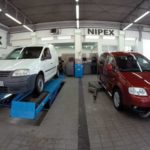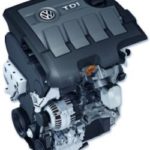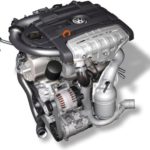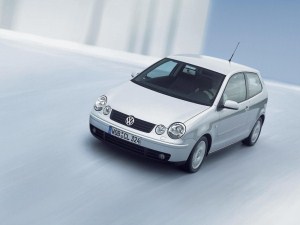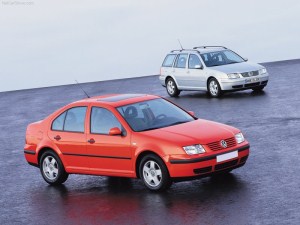VW Caddy 2004 - 2010 - Used, precision, flaws
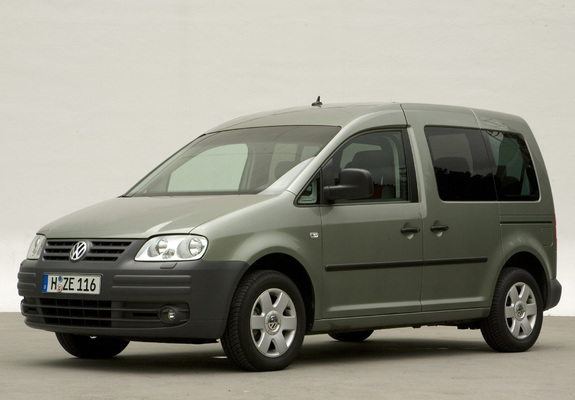
VW Caddy
In 2004, the third generation VW Caddy minivan was introduced, a cheaper alternative to the Touran. The predecessors were based on the Škoda and Seat, but this Vw Caddy minivan does not share any characteristics with them. It is produced in a transport version with two seats and a passenger version as a five-seater (trunk volume 750 liters.)
The basic VW Caddy is 440,5 cm long, 180 cm wide and 183 cm high.
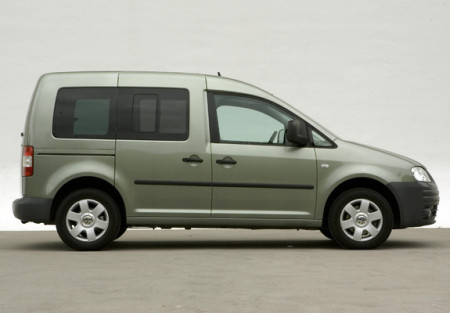
Since spring 2004, a seven-seat Vw Caddy Life has been available, with a boot capacity of 190 liters. Introduced in 2005, the Vw Caddy Life Tramper is equipped with camping equipment. 2008 saw the release of the Caddy Maxi with a length of 4,88 meters.
All models were redesigned in 2010 with changes to the front and new engines.
The VW Caddy is sturdy, the body is elevated and the suspension more robust. The rear seats fold down and fold out, and with a transport volume of up to 3200 liters, the Vw Caddy monovolumen is very interesting on the market. The sliding rear door on the driver's side greatly facilitates the loading of goods.
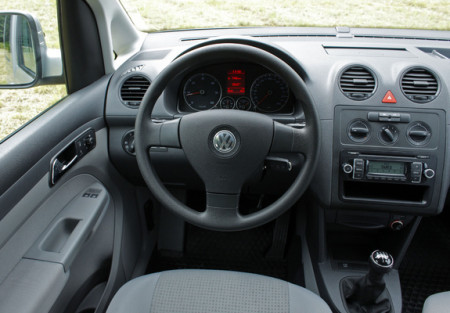
VW Caddy
In the gasoline engine range are 1.4 16V with 80 hp and 1.6 with 102 hp. Of the diesel models on offer are 2.0 SDI with 69 hp and 1.9 TDI with 75 hp and 105 hp.
The most recommended engine is 1.9 TDI with a consumption of 7 - 7,5 liters per 100 kilometers and a diesel particulate filter. Since 2007, this engine is also available with 140 hp and a consumption of about 8 l / 100 km. It is available with a five-speed manual transmission and a six-speed DSG gearbox. The engine also includes a Vw Caddy EcoFuel 2.0 109hp engine that primarily runs on natural gas and has a 13-liter petrol tank. Some models come with 4Motion all-wheel drive.
Volkswagen hasn’t experimented too much on the Caddy. He simply took advantage of the extremely thankful construction of the Golf 5, and adapted it to commercial use. For example, the entire front suspension of the Caddy is faithfully copied from the Golf, while the rear is still equipped with a slightly stiffer (more durable) suspension system with leaf springs adapted to commercial use. This way of construction has made an excellent compromise between reliability and usability.
At the 2007 Euro NCAP crash test, a VW Caddy equipped with front airbags and side airbags earned a rating of four.
The Vw Caddy delivers a comfortable ride, the steering is precise and it feels like you're in a passenger, not a commercial vehicle.
Technical characteristics:
| Manufacturer | VW |
| Model | Caddy |
| The year of production | 2004.-2010. |
| Variants | Caddy Life, Caddy Life Tramper, Caddy Maxi |
| Length | 4405 mm |
| Width | 1800 mm |
| Height | 1830 mm |
| Trunk capacity | 190 3200-l |
| Curb weight | 1490 kg |
| Permissible load (kg) | 550 800-kg |
Advantages - VW Caddy
- Agile
- Good workmanship
- Economical diesel engines
- EcoFuel engine
- Good driving characteristics
- Practical sliding door
- Variability
Mane - VW Caddy
- Gasoline engines are not economical
- Immobilizer problems (starter models)
- Plastic in the interior is prone to damage
- Worn shaft joints
- Exhaust system corrosion
- Clogged DPF
- Oil leaks
When buying a used Vw Caddy, the customer should pay attention to the condition of the turbine 1,9 liter TDI, on the condition of the oil cooler of the two-liter diesel atmosphere, and on the condition of the electrical connections in the headlights. Although most of these cars have covered an extremely large number of kilometers, the simple and proven construction with regular service visits allows them a long service life, even after they have covered 500.000 kilometers.
Acquiring (economic) circumstances, legendary status 1,9 liter TDI engine in Caddies like this and not exactly at the level it was in older models. Namely, since 2004, turbocharger suppliers to Volkswagen have started to supply partially reconstructed turbines. The reconstruction referred to savings in materials, which resulted in a shorter working life. The Nipex service center notes that they recorded several cases when the turbine did not last more than 150.000 kilometers. Of course, a more careful driving and regular visits to the service extend the service life. After all, it is also the only problem that is directly related to the engine. On the other hand, the simple construction of a two-liter atmospheric diesel engine does not know any standard problems. The service technicians were also acquainted with the specimens that covered more than 500.000 kilometers, and on which there were no interventions, except for the usual maintenance.
One of the few problems that has been expressed by the VW Caddy under the bonnet on the two-liter diesel versions has been related to inadequately conducted wiring. Specifically, a sensor that measures engine speed is connected to a central computer with two electrical conductors. The conductors are supported by an alternator, which damages the conductors by constant vibration and, due to vibration exposure, bursts. Damaged conductors cannot transmit engine speed information to a central computer, which prevents the engine from starting. In addition, a number of interventions on the oil cooler were recorded by an authorized service center. Namely, the damaged oil cooler leaks engine oil into the engine cooling system, thus mixing the oil with coolant. This problem is only characteristic of models with two-liter SDI engines, and service intervention involves changing the oil cooler, changing the engine oil, changing the coolant and flushing the entire cooling system.
However, one of the problems that did not bypass almost any Vw Caddy until the redesign in 2008 is related to the physically incompatible "throat" of the turn signal lamp and headlights. Practically, this means that the turn signal lamps can never be adequately fitted in the headlights. In the most serious cases, this leads to the creation of high transient resistances, which due to the high temperature begin to melt the plastic in the headlights. In such cases, the damaged headlight must be completely replaced.
In any case, such standard problems are revealed by a simple overview. They are characteristic of both passenger and delivery models, which are essentially indistinguishable. With a minor redesign from 2008, Volkswagen has corrected most of these problems, so in this case, it is best to choose younger models, manufactured since 2008.
Revoke
Volkswagen first recalled Caddy in early February 2005. The problem was expressed on the brake system. Specifically, the oil conductors in the brake system could be damaged, causing the brake oil to leak. Therefore, the power assisted braking is reduced. On all recalled specimens, Volkswagen replaced the damaged oil conductors and installed modified ones. The revocation is registered under the code R / 2004/201.
The second recall was also in February 2005. On models manufactured since 01.03.2004. until 31.08.2004. The problem was observed on the fuel pump housing. As a result of the constant vibration while driving, there was little damage around the screws that secured the fuel pump. Damaged fuel pump housing leaked diesel fuel. On the recalled models, the screws were replaced and the cases on the more severely damaged specimens were changed. The revocation is registered under code R / 2004/210.
Sources:
auto-mane.com
proauto.ba
Recommendation of similar texts:

Hi there, I am Mladen and I am an auto enthusiast. I started this blog years ago to help like minded people share information about latest cars, car servicing ideas, used car info, exotic cars, and auto technology. You will find helpful articles and videos on a wide variety of cars - Audi, Mercedes, Toyota, Porsche, Volvo, BMW and much more. Ping us if you have anything cool to share on latest cars or on how to make older cars more efficient, or just want to say hi!

